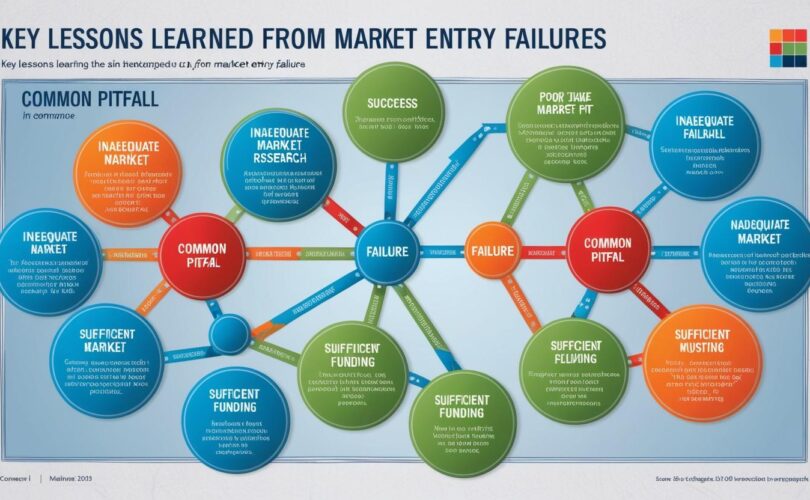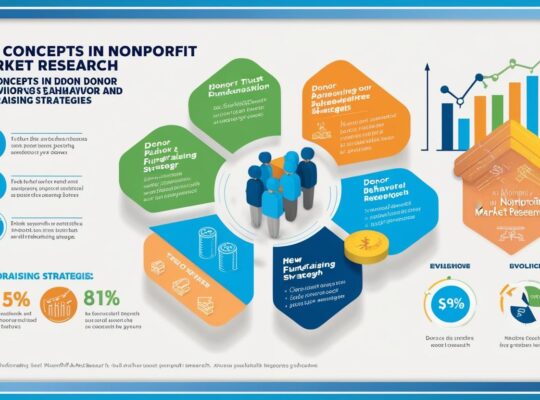Introduction
Entering a new market can be a pivotal moment for any business, offering opportunities for growth, expansion, and increased revenue. However, it is also a complex and risky endeavor, fraught with potential pitfalls. Market entry failures can be costly and detrimental to a company’s overall health. In this article, we will delve into the common reasons for market entry failures, the lessons learned from these mistakes, and strategies to avoid them.
Understanding Market Entry Failures
Market entry failures can stem from a variety of factors, including inadequate market research, poor timing, insufficient resources, and a lack of cultural understanding.
Inadequate Market Research
One of the most critical mistakes companies make is entering a market without thorough research. As the famous entrepreneur, Steve Jobs, once said, “Get closer to your customers. So close that you tell them what they need well before they realize it themselves.” This emphasizes the importance of understanding the target market’s needs, preferences, and behaviours. Conducting comprehensive feasibility studies and gathering detailed market data are essential steps in avoiding this common pitfall.
Poor Timing
Timing is everything when it comes to market entry. Entering a market too early or too late can be disastrous. For instance, entering a market too early can result in significant investment without immediate returns, while entering too late can mean missing the window of opportunity. A careful analysis of market trends and competitive dynamics is crucial to determine the optimal time for entry.
Insufficient Resources
Lack of adequate resources, including financial, human, and technological, can severely hinder a company’s ability to successfully enter a new market. It is essential to ensure that the company has the necessary resources to support the market entry strategy. This includes having a robust financial plan, skilled personnel, and the right technology to compete effectively.
Lack of Cultural Understanding
Cultural differences can significantly impact market entry. Ignoring local customs, regulations, and consumer behaviors can lead to misunderstandings and failure. For example, a company that fails to adapt its product or service to local tastes and preferences may find it difficult to gain traction.
Lessons Learned
Several key lessons can be derived from market entry failures:
Adaptation is Key
Companies must be willing to adapt their strategies to fit the new market. This includes product localization, pricing adjustments, and marketing strategies that resonate with the local audience. As the renowned business strategist, Peter Drucker, noted, “The best way to predict the future is to create it.” This underscores the importance of being proactive and adaptable in new market environments.
Build Local Partnerships
Forming partnerships with local businesses or stakeholders can provide valuable insights and support. These partnerships can help navigate regulatory complexities, understand local market dynamics, and build a stronger presence in the new market.
Focus on Customer Needs
Understanding and meeting customer needs is paramount. Companies should invest in customer feedback mechanisms and continuously monitor market trends to ensure their offerings remain relevant and competitive.
Strategies to Avoid Market Entry Failures
To avoid the pitfalls associated with market entry, companies should consider the following strategies:
Conduct Thorough Market Research
Before entering a new market, it is crucial to conduct extensive research. This includes analyzing market size, growth potential, competitive landscape, and consumer behaviour. Financial modelling and feasibility studies can help in making informed decisions.
Develop a Robust Entry Strategy
A well-planned entry strategy is essential. This involves defining clear objectives, identifying target segments, and outlining marketing and sales strategies. The strategy should also include contingency plans to address potential risks and challenges.
Ensure Regulatory Compliance
Understanding and complying with local regulations is vital. Non-compliance can lead to legal issues, fines, and damage to the company’s reputation. Engaging with local legal and regulatory experts can help in navigating these complexities.
Allocate Sufficient Resources
Ensuring that the company has the necessary resources to support the market entry is critical. This includes financial resources, skilled personnel, and the right technology. A detailed financial plan and resource allocation strategy can help in managing resources effectively.
Conclusion
Market entry failures are often avoidable if companies take the time to conduct thorough research, adapt to local conditions, and ensure they have the necessary resources. By learning from past mistakes and implementing strategies that focus on customer needs, local partnerships, and regulatory compliance, businesses can significantly enhance their chances of success in new markets.
If you are considering entering a new market and need expert guidance, Samunnati Ventures is here to help. With over 20 years of experience in feasibility studies, business plans, financial modeling, and market entry strategies across various industries and geographies, we can provide the insights and support you need to navigate the complexities of market entry successfully. Contact us today to ensure your market entry is a success.







